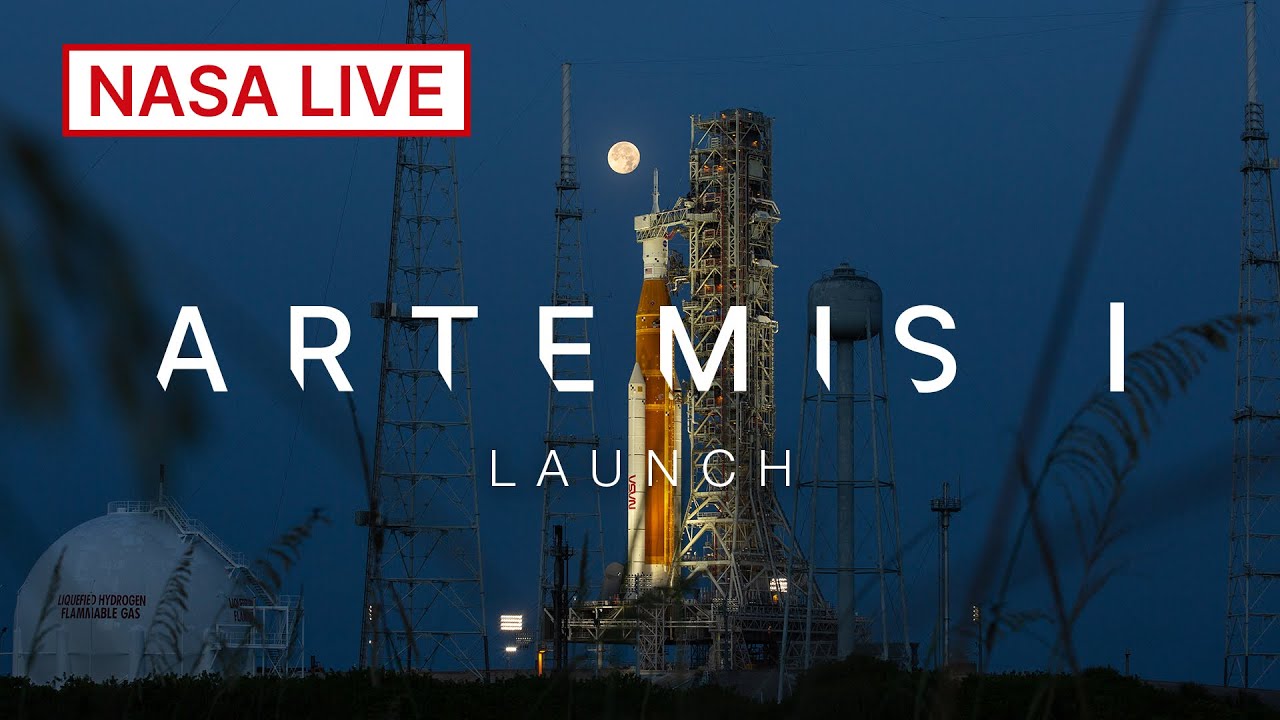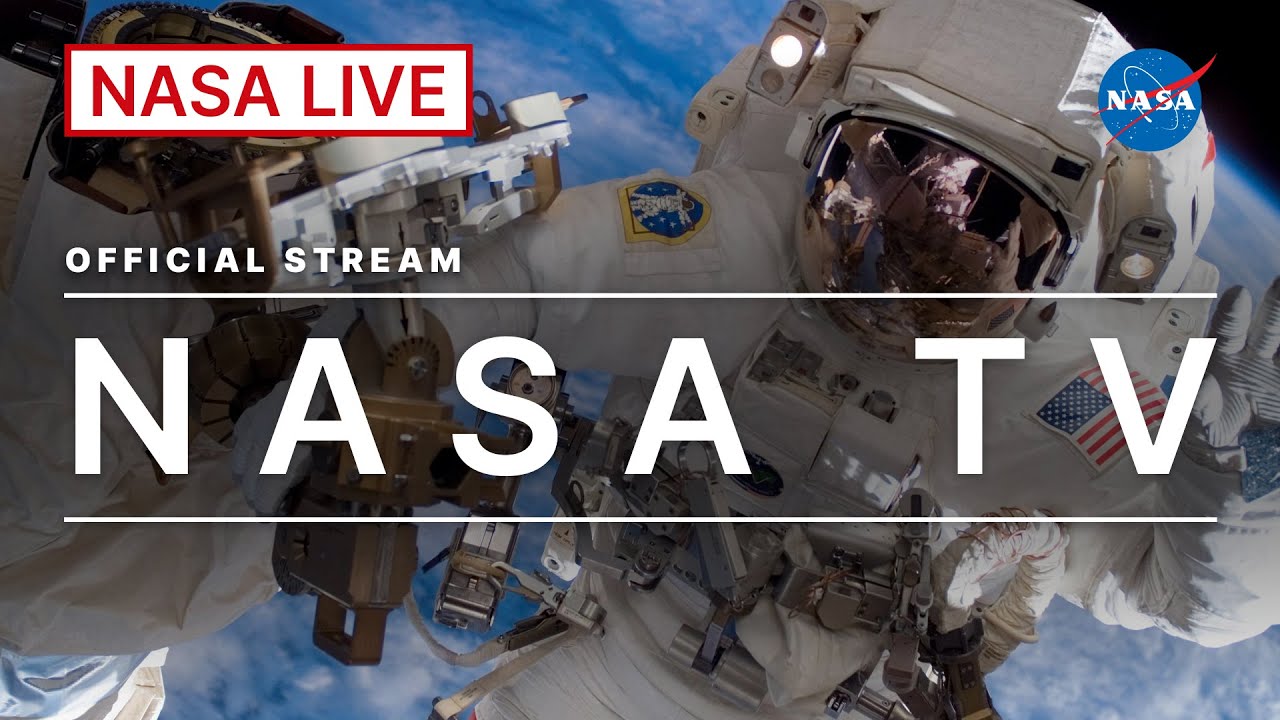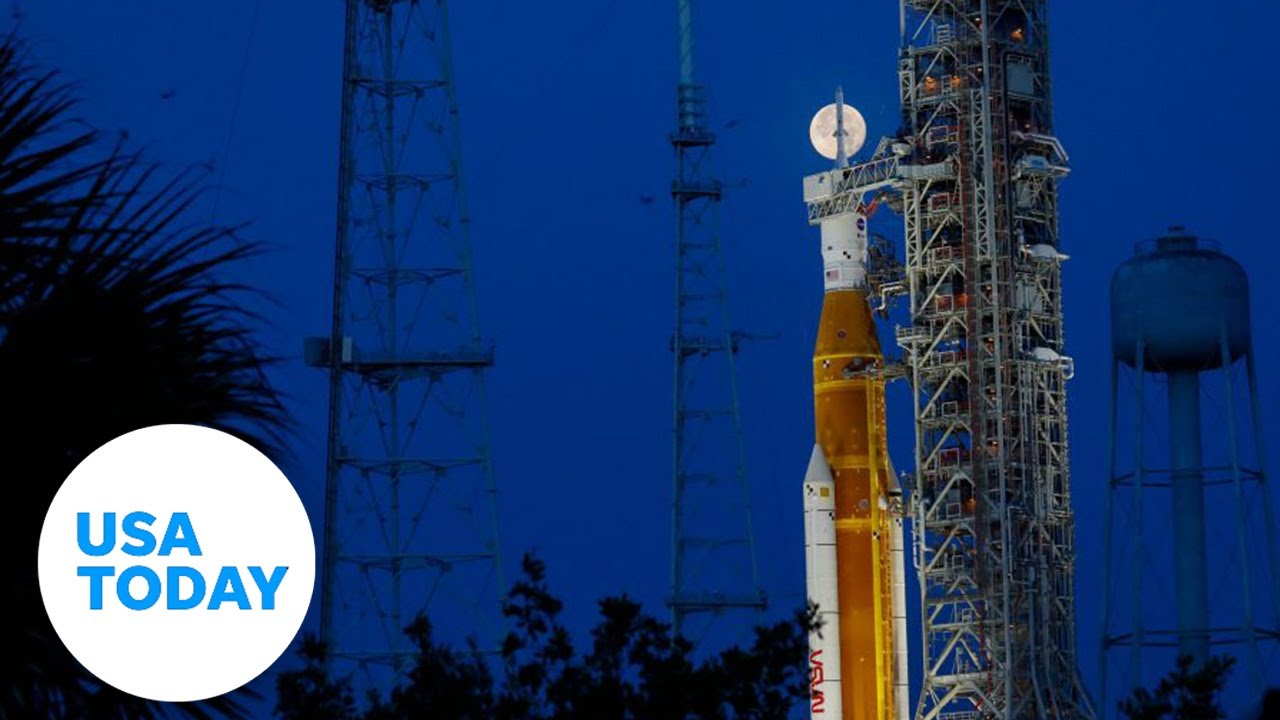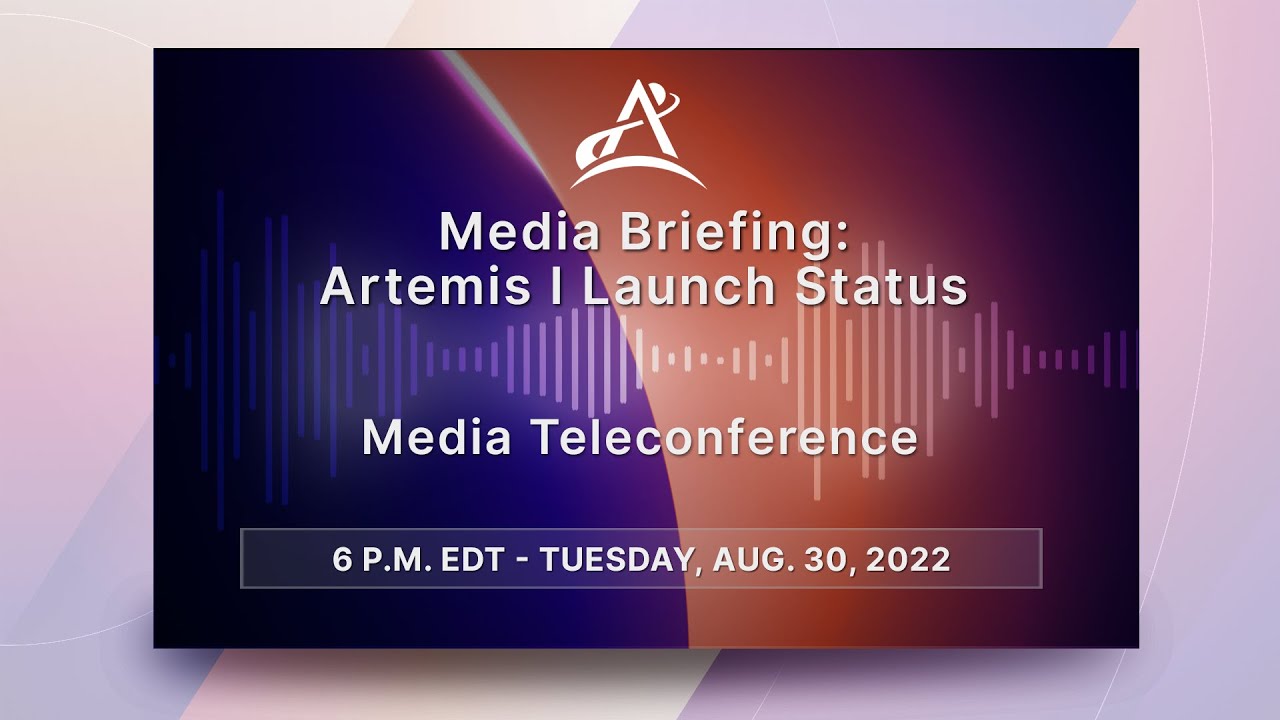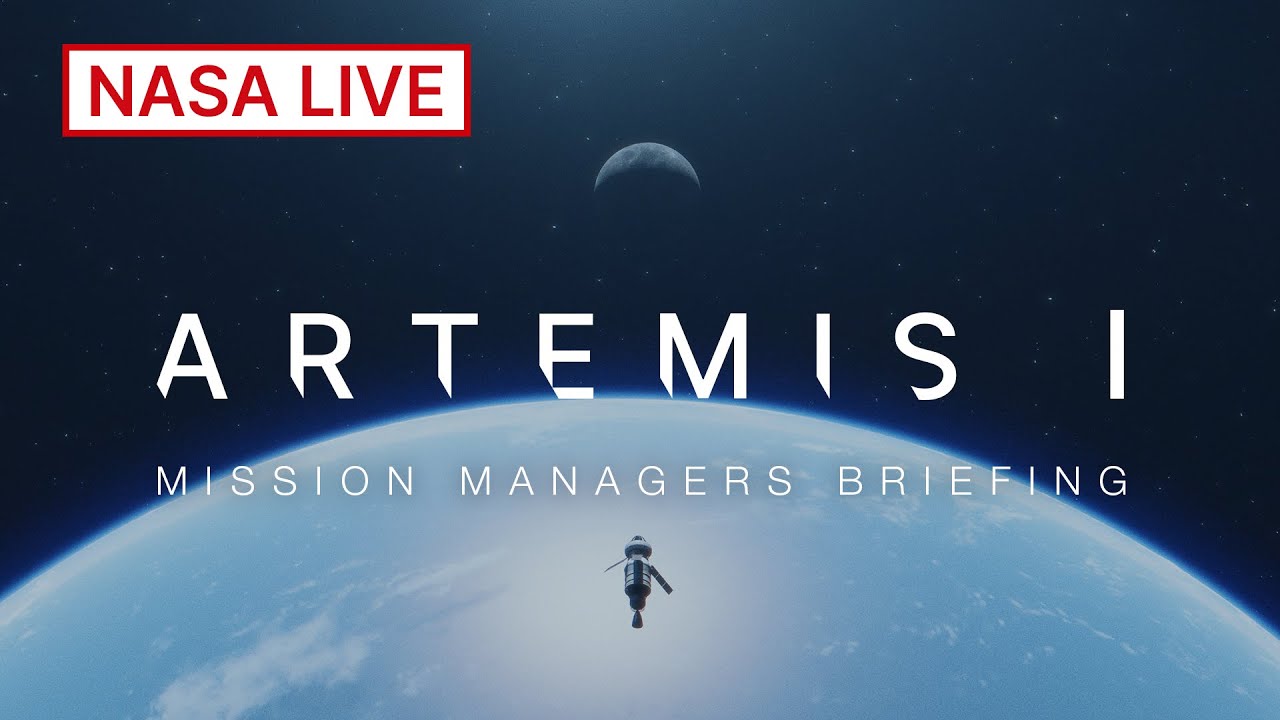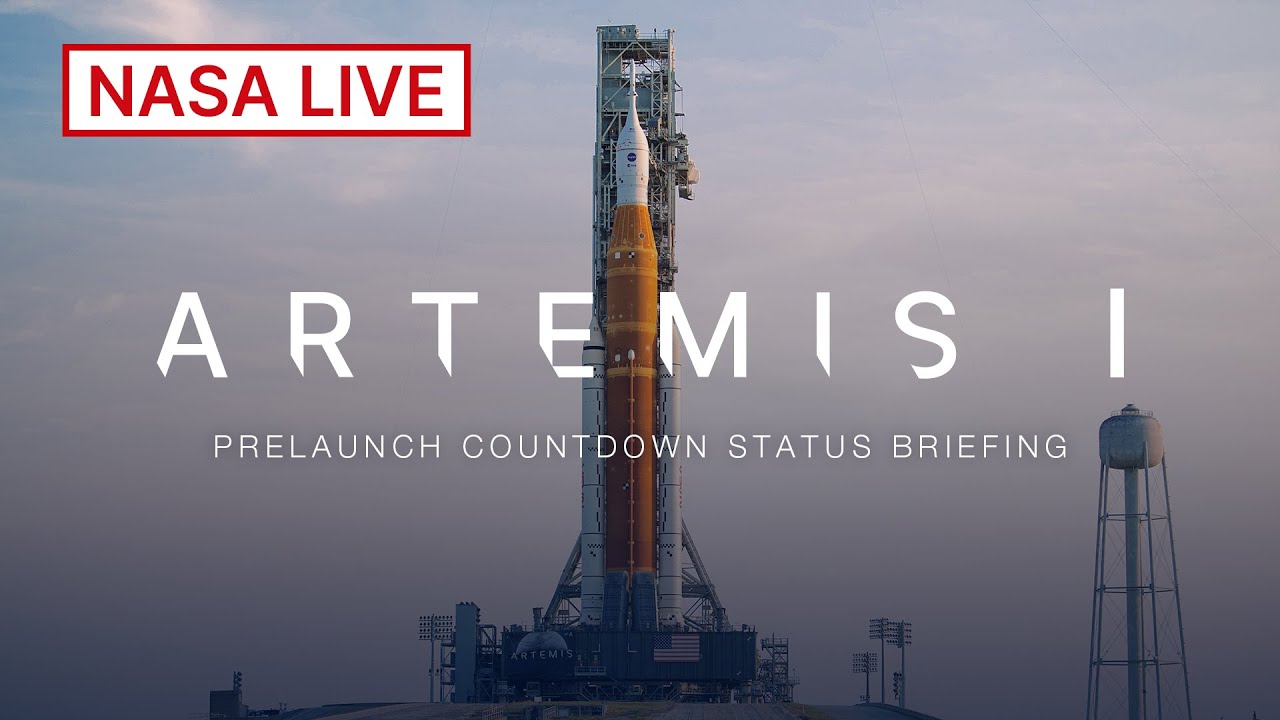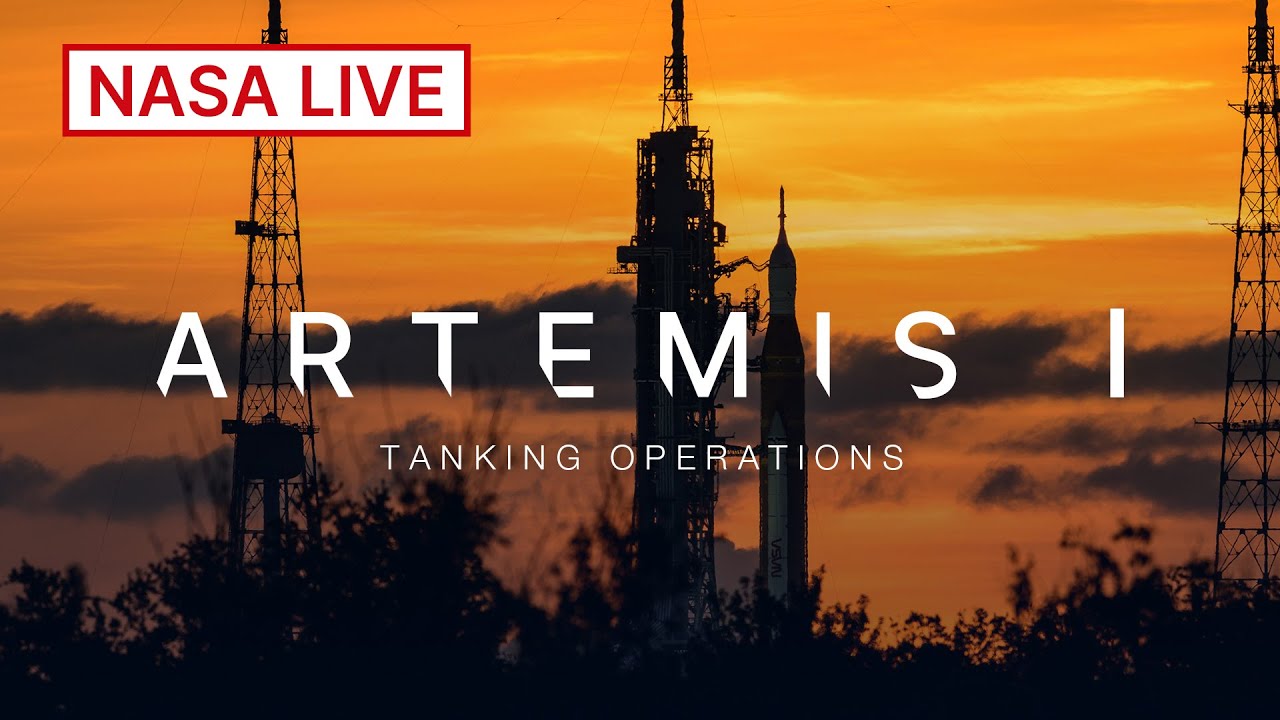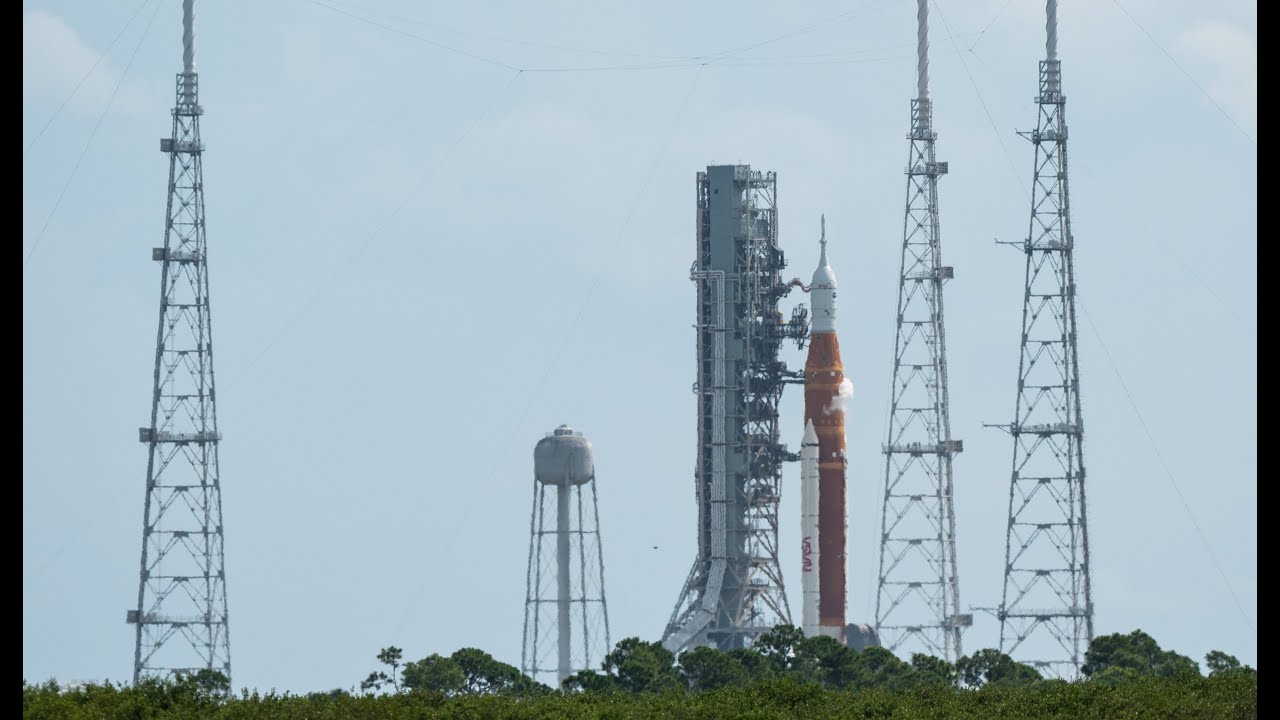NASA TV coverage of the Artemis I launch of the Space Launch System and Orion capsule is scheduled to start at 10:30 UTC on 2022-08-29, with the two hour launch window opening at 12:33 UTC. If the launch does not occur during that launch window, the next backup launch opportunities will be on September 2 and 5. Weather is forecast as 80% favourable at the start of the launch window, falling to 60% at the end.
After hours of problems with apparent hydrogen leaks during filling of the tanks, a reported crack in the interstage part of the rocket, and now problems with the hydrogen bleed flow on first stage engine number 3, the countdown is in a hold originally planned to be ten minutes but which has now stretched to over half an hour. The start of the heavily-produced public affairs Webcast from NASA in the main post has been pushed back again and again as this has been going on.
The tanks have now been filled and the crack found to be insulation and not the rocket structure, but the hydrogen bleed problem remains unresolved. The following NASA Webcast is a direct NASA feed with announcements from the public affairs officer as they are released. Turn on captions to overlay the video with text of the most recent announcement.
There have been a lot of remarks both by NASA and contractor personnel and media describing the Artemis I SLS/Orion as the “biggest rocket ever”. Jonathan McDowell has added a “Comparison with other moonships” to his Artemis I information page with actual details. This is a wide monospaced table—use the horizontal scroll bar to see all of the columns.
Comparison with other moonships:
Rocket Spaceship Rocket Rocket Dia Rocket Ship Ship Ship Combined Combined Combined Launch Max Altitude
Length Diam Launch mass Length Diam. Launch mas Length Diam Launch mas Thrust reached
m m tonne m m tonne m m tonne MN km
----------------------------------------------------------------------------------------------------------------------------------------------------
Saturn V Apollo 84.7 10.1 2850 25.0 3.9 50 110.6 10.1 2900 34.0 400,000
N-1 L-3 61.0 16.8 2623 44.3 4.1 102 105.3 14.0 2788 41.4 40
SLS Block 1 Orion 78.3 8.4 2592 20.0 5.0 33 98.3 8.4 2585 39.0 0 (so far)
Artemis I rank: 2nd 3rd 3rd 3rd 1st 3rd 3rd 3rd 3rd 2nd 3rd (so far)
There are other big rockets that were not designed for human lunar missions - notably Energia and Shuttle.
The only criterion in which the Artemis I rocket is “biggest” is in the diameter of the lunar capsule: 5.0 metres for Orion vs. 4.1 metres for the Soviet N-1/L3 lunar stage and 3.9 metres for the Apollo Command/Service module. Future versions planned for the SLS will be taller than the N-1, but this one isn’t.
Launch scrubbed due to a leak … looks like the same issue that plagued the wet dry rehearsal.
Scrubbed. Might have known.
When’s the next window, and will it stay on the pad until then?
Launch attempt for today has been scrubbed due to problems with the engine #3 bleed which could not be fixed within the launch window.
The engine bleed process was supposed to have been tested during the Wet Dress Rehearsal (WDR), but the earlier attempts in April and June 2022 failed to get to that test due to having been ended early as a result of other problems. It was decided after the 2022-06-20 WDR attempt to proceed to a launch attempt without having performed a WDR that would have tested the engine bleed. That decision now appears to have been unwise.
The next launch opportunity is on 2022-09-02, but that assumes the problem can be diagnosed and fixed in time for that. The opportunity after that is on 2022-09-05. If that is missed, I think they’ll have to wait about a month for the next lunar launch window. Whether they’ll have to roll the stack back to the Vehicle Assembly Building to repair the engine bleed problem has not yet been announced.
There will probably be a press conference in a few hours to discuss these matters.
How about biggest budget?
Here is the Artemis I post-scrub news conference. These are senior managers including clueless administrator Bill Nelson, and deferred many of the technical questions to a second panel with the people who know what they’re talking about which will be held tomorrow, 2022-08-30, evening Florida time.
I could only get far enough to hear that the VP “is here and pumped”. Enuf. The Art of the Miss. The name reflects either courage or cluelessness. Not sure which.
Not sure about the biggest budget, but it looks like definitely the biggest cost overruns.
In May this year, Bill Nelson - the current NASA administrator - testified in front of the Senate as if he had found religion (source)
NASA traditionally has used cost-plus contracts where the government assumes the risk that a product may cost more than the contracted amount and pays for any overruns, and also pays award fees often based on performance. In a fixed price contract, the company assumes the risk and must absorb any overruns. NASA’s PPP contracts are milestone-based and the company is paid only when it achieves the designated milestones.
Later he said “It’s a new day. The government can’t do it all. You give us x amount of money and … we can leverage that money by working with the commercial industry and through competition bring those costs down to NASA.” He cited former Vice Chairman of the Joint Chiefs of Staff Gen. John Hyten as telling him that SpaceX’s Falcon 9 and Falcon Heavy rockets have saved the military $40 billion in launch costs. Falcon 9 was funded in part through one of NASA’s commercial cargo PPPs.
Here is the Artemis I Mission Managers’ Media Teleconference held on the evening of 2022-08-30 Florida time (early the next day UTC). The main announcement is that they are working toward a next launch attempt on Saturday, 2022-09-03, one day after the previously announced next launch opportunity.
Here is the Mission Managers’ Artemis I Pre-launch Briefing held on 2022-09-01 at 22:00 UTC. Speaking are:
- Mike Sarafin, Artemis mission manager, NASA Headquarters
- John Honeycutt, SLS program manager, NASA’s Marshall Space Flight Center
- John Blevins, SLS chief engineer
- Charlie Blackwell-Thompson, Artemis launch director, Exploration Ground Systems Program, Kennedy
- Melody Lovin, weather officer, Space Launch Delta 45
The launch window for the next attempt opens on 2022-09-03 at 18:17 UTC and runs until 20:17 UTC. The countdown procedures will be adjusted to provide additional time to condition the engines for flight and verify the performance of the hydrogen bleed system that chills the engines before ignition. The problem which occurred on the last attempt was judged to be a sensor problem, not a failure of the bleed system.
This is the launch day minus 1 countdown status briefing on 2022-09-02 at 12:00 UTC. Participants are:
- Jeremy Parsons, deputy manager, Exploration Ground Systems, NASA Kennedy
- Melody Lovin, weather officer, Space Launch Delta 45
Weather is forecast as 60% favourable at the start of the launch window, rising over the two hours.
Flight controllers have given a “go” to begin loading propellants into the Space Launch System core stage, and the chill-down of liquid oxygen feed lines is underway. This NASA Video channel provides live coverage of the tanking operation with occasional commentary.
Scrubbed for the day at 15:18 UTC due to a hydrogen leak at the tail quick disconnect 8 inch hydrogen feed line. Three attempts to get the connection to seat all failed as soon as high-rate hydrogen flow began.
There will be a press conference later today to discuss what happens next. The next launch opportunity is Monday, September 5th, after which the launch window closes until near the end of September.
This is the same quick disconnect which has leaked on and off ever since the first Wet Dress Rehearsal in April. “Of course it leaks, Boeing made the core stage.”
In a normal business, heads would roll over something like this. Not to under-estimate the engineering challenge of a quick-disconnect in any circumstances, especially one handling notoriously-leaky hydrogen. But NASA has had two decades to get this right.
Of course in today’s NASA, if they did actually fire someone for failing, they would then limit their short list of replacement candidates to differently-abled transgendered single mothers of color. And whichever one they appointed would immediately take a six-month parenting leave of absence.
China is going to the Moon. Maybe it would be cheaper & faster to hitch a ride with them?
In case you needed to be reminded of the good old days of our space program:
BTW, Amazon Prime has a decently colorized version. Presumably they used later seasons’ color episodes as a reference.
This is the post-scrub news conference on 2022-09-03. I will add comments about the content after I’ve viewed it. The main message is that there will no further launch attempt in this window; they will try again “no earlier than” late September or the October window.
With apologies to the distaff side of the readership, this is the Babylon Bee. Maybe we can all chortle together?
Maybe they could post a follow up: “Moon shot goes off course after male astronaut refuses to stop and ask directions.”
